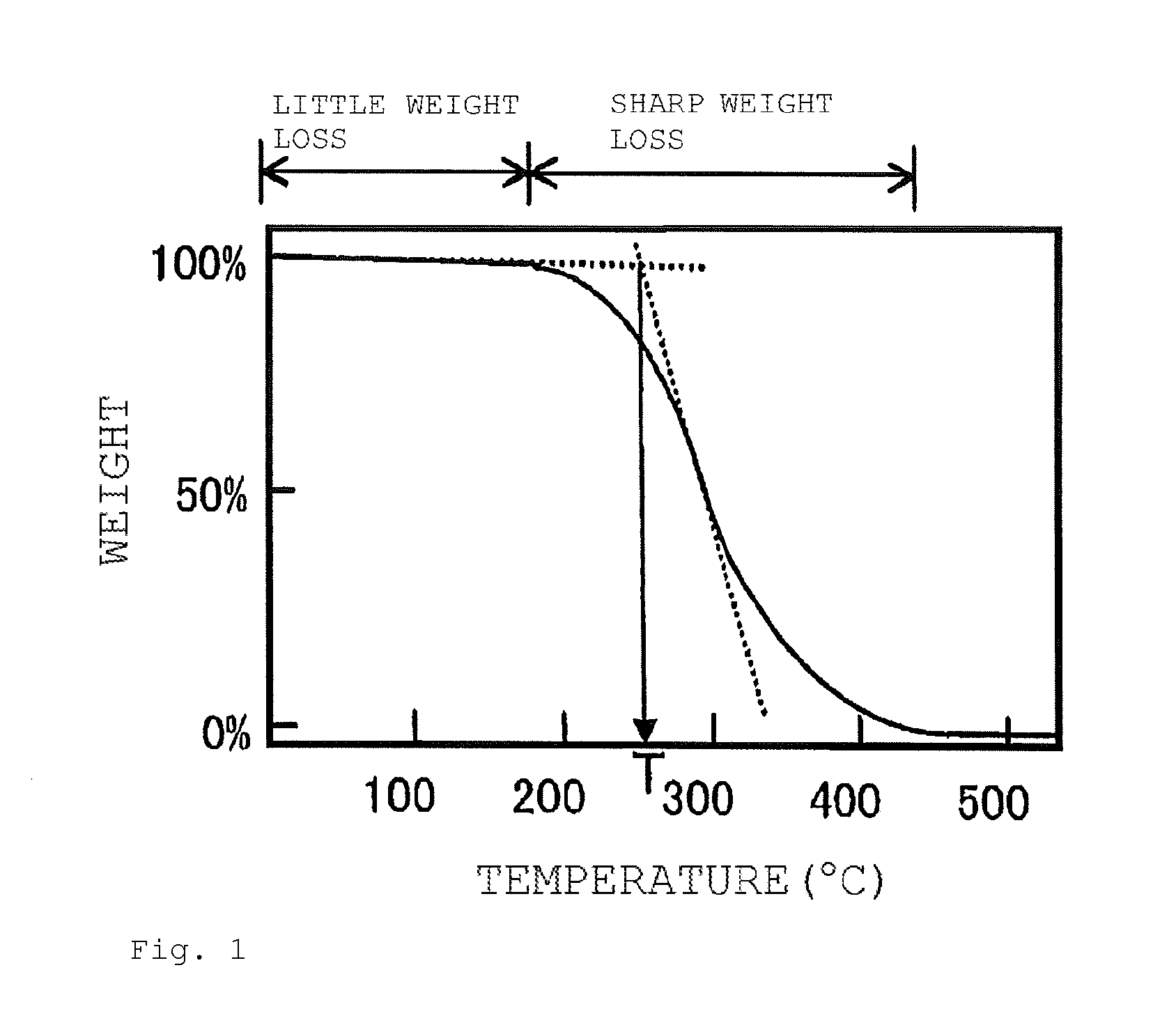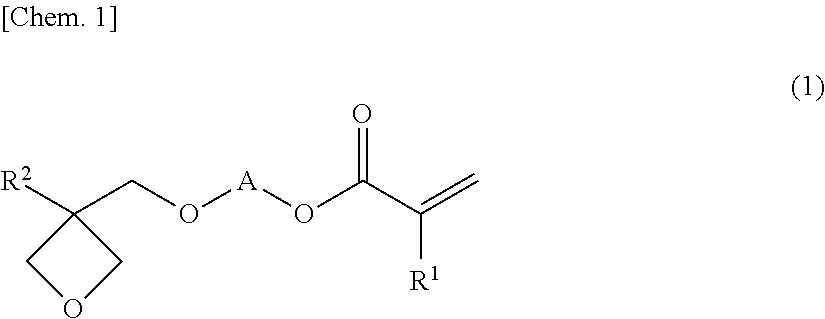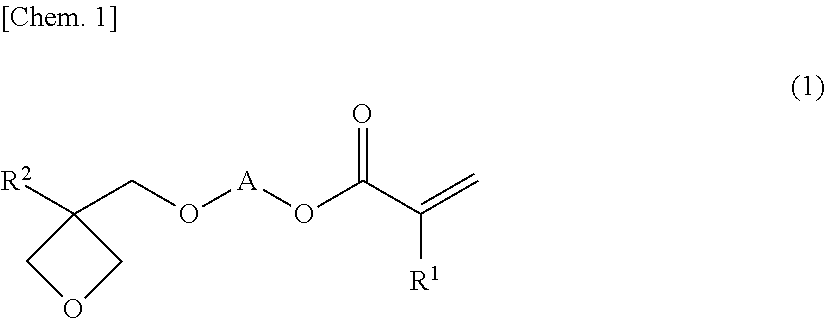Radical polymerizable resin, radical polymerizable resin composition, and cured product thereof
a technology polymerizable resin, which is applied in the field of radical polymerizable resin, can solve the problems of thermal degradation, increase in optical loss of waveguide, peeling (separation) at the adhesive, etc., and achieves excellent workability, satisfactory flexibility, and low viscosity.
- Summary
- Abstract
- Description
- Claims
- Application Information
AI Technical Summary
Benefits of technology
Problems solved by technology
Method used
Image
Examples
example 1
Production of Radically Polymerizable Resin
[0071]A mixture (monomer mixture) of 3.78 g of toluene, 8.82 g (34.67 mmol) of 3-ethyl-3-(3-acryloyloxy-2,2-dimethylpropyloxymethyl)oxetane (EOXTM-NPAL) represented by following formula, and 0.039 g of 4-methoxyphenol was placed in a three-necked flask equipped with an initiator-dropping line, a nitrogen line, and a thermometer, followed by temperature adjustment to 25° C. Next, a mixture of 0.093 g of toluene and 0.016 g (0.11 mmol) of boron trifluoride diethyl ether complex was quantitatively added dropwise over 2 hours using a delivery pump. After the completion of dropwise addition, this was held for 4 hours, purified by precipitation from five times the amount of methanol (containing 0.1% of 4-methoxyphenol), held in a vacuum dryer (40° C., full vacuum) for 20 hours, and yielded a colorless, transparent liquid resin (1).
[0072]The liquid resin (1) had a weight-average molecular weight of 24800 in terms of a polystyrene standard.
example 2
Production of Radically Polymerizable Resin
[0073]A mixture (monomer mixture) of 19.98 g of toluene, 8.82 g (34.67 mmol) of EOXTM-NPAL, 23.56 g (0.10 mol) of 3-ethyl-3-(2-ethylhexyloxymethyl)oxetane (trade name “OXT-212,” supplied by Toagosei Co., Ltd.), and 0.039 g of 4-methoxyphenol was placed in a three-necked flask equipped with an initiator-dropping line, a nitrogen line, and a thermometer, followed by temperature adjustment to 25° C. Next, a mixture of 5.60 g of toluene and 0.95 g (6.60 mmol) of boron trifluoride diethyl ether complex was quantitatively added dropwise over 2 hours using a delivery pump. After the completion of dropwise addition, this was held for 4 hours, purified by precipitation from five times the amount of methanol (containing 0.1% of 4-methoxyphenol), held in a vacuum dryer (40° C., full vacuum) for 20 hours, and yielded a colorless, transparent liquid resin (2).
[0074]The liquid resin (2) had a weight-average molecular weight of 8200 in terms of a polystyr...
example 3
Production of Radically Polymerizable Resin
[0075]A mixture (monomer mixture) of 20.40 g of toluene, 8.82 g (34.67 mmol) of EOXTM-NPAL, 39.26 g (0.17 mol) of OXT-212, and 0.039 g of 4-methoxyphenol was placed in a three-necked flask equipped with an initiator-dropping line, a nitrogen line, and a thermometer, followed by temperature adjustment to 25° C. Next, a mixture of 5.60 g of toluene and 0.95 g (6.60 mmol) of boron trifluoride diethyl ether complex was quantitatively added dropwise over 2 hours using a delivery pump. After the completion of dropwise addition, this was held for 4 hours, purified by precipitation from five times the amount of methanol (containing 0.1% of 4-methoxyphenol), held in a vacuum dryer (40° C., full vacuum) for 20 hours, and yielded a colorless, transparent liquid resin (3).
[0076]The liquid resin (3) had a weight-average molecular weight of 8300 in terms of a polystyrene standard.
PUM
| Property | Measurement | Unit |
|---|---|---|
| temperature | aaaaa | aaaaa |
| heatresistant temperature | aaaaa | aaaaa |
| speed | aaaaa | aaaaa |
Abstract
Description
Claims
Application Information
 Login to View More
Login to View More - R&D
- Intellectual Property
- Life Sciences
- Materials
- Tech Scout
- Unparalleled Data Quality
- Higher Quality Content
- 60% Fewer Hallucinations
Browse by: Latest US Patents, China's latest patents, Technical Efficacy Thesaurus, Application Domain, Technology Topic, Popular Technical Reports.
© 2025 PatSnap. All rights reserved.Legal|Privacy policy|Modern Slavery Act Transparency Statement|Sitemap|About US| Contact US: help@patsnap.com



